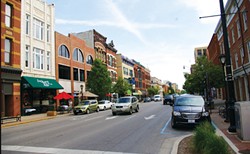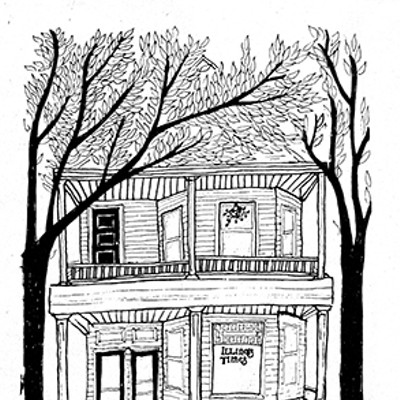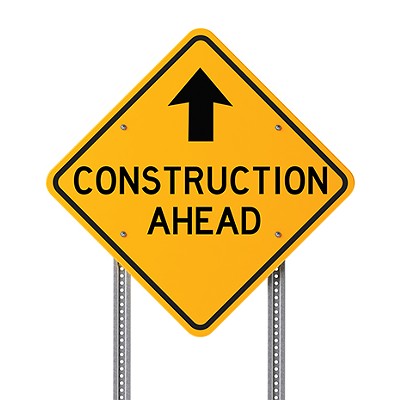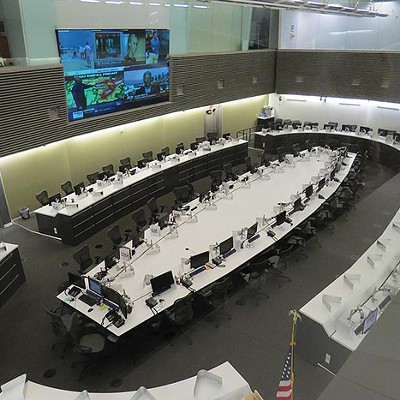A place for business to live
Developing economic development in Springfield
[
{
"name": "Air - MedRect Combo - Inline Content 1",
"component": "11490391",
"insertPoint": "3",
"requiredCountToDisplay": "1",
"parentWrapperClass": "fdn-ads-inline-content-block"
},{
"name": "Air - MedRect Combo - Inline Content 2",
"component": "11490392",
"insertPoint": "7",
"requiredCountToDisplay": "5",
"parentWrapperClass": "fdn-ads-inline-content-block"
},{
"name": "Air - MedRect Combo - Inline Content 3",
"component": "11490393",
"insertPoint": "12",
"requiredCountToDisplay": "9",
"parentWrapperClass": "fdn-ads-inline-content-block"
}
]
On July 28, Mayor Langfelder 2.0 made good a campaign promise and appointed the members of a new Economic Development Commission that will advise the city’s – which is to say the mayor’s – Office of Planning and Economic Development. Major development projects, such as the bungled Bluffstone proposal to build downtown student housing, you might remember, had been served up for approval to the city council a little undercooked, and Langfelder thinks the solution is to put a few more cooks in the kitchen.
Indeed, press accounts made the new body sound more like a TIF review commission than one devoted to economic development. If the Economic Development Commission devotes itself solely to TIF projects, who will bring wisdom to city hall about the larger problem of economic development in a city whose leaders have for decades confused mere building with development, to the city’s detriment?
Such a body of wise men and women would not look much like the one empaneled by the mayor, but would include labor economists, urbanists and tech-heads. It would be nice to see an historian there too, if only to remind aldermen of all the economic development miracle cures swallowed by the city in the past that didn’t cure what ailed it.
If the membership of such a panel needs to be broad, its focus needs to be narrow, or at least more precisely defined. “Economic development” is like “reform” – everyone agrees the city needs more of it, but few agree on what it is. For example, too many aldermen understand economic growth in terms of an increase of the tax base, specifically the retail tax base, on which the corporate city substantially relies for its operating revenue. People who do not have to pay the city’s bills think of economic development in terms of jobs.
But which kinds of jobs? The expansion of the retail sector has not created many quality jobs. (The health racket has done better.) The unforgiving political dynamic of the ward has left several aldermen wanting to see nut-tightening jobs for the semi-skilled of the kind that Springfield used to offer at Hobbs or Sangamo or Allis-Chalmers. Those jobs hardly exist, at least not in the U.S., or they won’t exist in a few years, thanks to off-shoring and robotics.
Not that adding jobs alone is proof of economic development. There is a difference between an economy that is growing larger (Texas in recent years is an example) and an economy that is developing. In a more developed local economy, people working in a wider range of industries increase their productivity, which boosts output and eventually wages. There are two ways to increase an economy’s productivity. One is to replace workers with smart machines; this is at odds with the unofficially stated political goal of development, which is generate new jobs. The other way is not to replace workers but to improve them. There are ways to do that – better schools, apprenticeships, retraining programs, all done in collaboration with local employers – but none is within the reach of a city government.
In the Springfield of the fairly recent past, a more developed economy meant a more diverse economy. A local economy utterly reliant on government was a fool’s paradise. Even if the unanticipated anti-tax backlash (which is in fact an anti-government backlash) had never happened, changes in information and management systems meant that the government sector was going to shrink. Springfield’s present economy is much more diversified, but brick-and-mortar retailing seems doomed. Also, the increases in health spending that made possible the transformation of Springfield’s hospitals in medical service malls was based 1) on aging boomers who soon will die, whatever their therapists tell them and 2) the laughable inefficiency of the U.S. health insurance system, whose cost curve is being bent downward by Obama-led cost controls.
Stimulating new businesses is an excellent economic development strategy if you can pull it off, but the disappointing record of the Mid-Illinois Medical District suggests how hard it is to do. It’s easier to “grow” local businesses from small ones to bigger ones, but that is better left to the private sector; Springfield’s city hall acting like a venture capitalist is a little too much like dads dancing.
What to do? I say forget economic development as a discrete goal. Focus city resources on making Springfield a good city for its people to live in. Mend the gaps in the urban fabric with infill. Help citizens save their old buildings. Make sure the water and sewer and electricity systems work. Plant lots of trees. Run city hall in an efficient and friendly manner. Devote the city, in short, to Springfield development.
Contact James Krohe Jr. at [email protected].
Indeed, press accounts made the new body sound more like a TIF review commission than one devoted to economic development. If the Economic Development Commission devotes itself solely to TIF projects, who will bring wisdom to city hall about the larger problem of economic development in a city whose leaders have for decades confused mere building with development, to the city’s detriment?
Such a body of wise men and women would not look much like the one empaneled by the mayor, but would include labor economists, urbanists and tech-heads. It would be nice to see an historian there too, if only to remind aldermen of all the economic development miracle cures swallowed by the city in the past that didn’t cure what ailed it.
If the membership of such a panel needs to be broad, its focus needs to be narrow, or at least more precisely defined. “Economic development” is like “reform” – everyone agrees the city needs more of it, but few agree on what it is. For example, too many aldermen understand economic growth in terms of an increase of the tax base, specifically the retail tax base, on which the corporate city substantially relies for its operating revenue. People who do not have to pay the city’s bills think of economic development in terms of jobs.
But which kinds of jobs? The expansion of the retail sector has not created many quality jobs. (The health racket has done better.) The unforgiving political dynamic of the ward has left several aldermen wanting to see nut-tightening jobs for the semi-skilled of the kind that Springfield used to offer at Hobbs or Sangamo or Allis-Chalmers. Those jobs hardly exist, at least not in the U.S., or they won’t exist in a few years, thanks to off-shoring and robotics.
Not that adding jobs alone is proof of economic development. There is a difference between an economy that is growing larger (Texas in recent years is an example) and an economy that is developing. In a more developed local economy, people working in a wider range of industries increase their productivity, which boosts output and eventually wages. There are two ways to increase an economy’s productivity. One is to replace workers with smart machines; this is at odds with the unofficially stated political goal of development, which is generate new jobs. The other way is not to replace workers but to improve them. There are ways to do that – better schools, apprenticeships, retraining programs, all done in collaboration with local employers – but none is within the reach of a city government.
In the Springfield of the fairly recent past, a more developed economy meant a more diverse economy. A local economy utterly reliant on government was a fool’s paradise. Even if the unanticipated anti-tax backlash (which is in fact an anti-government backlash) had never happened, changes in information and management systems meant that the government sector was going to shrink. Springfield’s present economy is much more diversified, but brick-and-mortar retailing seems doomed. Also, the increases in health spending that made possible the transformation of Springfield’s hospitals in medical service malls was based 1) on aging boomers who soon will die, whatever their therapists tell them and 2) the laughable inefficiency of the U.S. health insurance system, whose cost curve is being bent downward by Obama-led cost controls.
Stimulating new businesses is an excellent economic development strategy if you can pull it off, but the disappointing record of the Mid-Illinois Medical District suggests how hard it is to do. It’s easier to “grow” local businesses from small ones to bigger ones, but that is better left to the private sector; Springfield’s city hall acting like a venture capitalist is a little too much like dads dancing.
What to do? I say forget economic development as a discrete goal. Focus city resources on making Springfield a good city for its people to live in. Mend the gaps in the urban fabric with infill. Help citizens save their old buildings. Make sure the water and sewer and electricity systems work. Plant lots of trees. Run city hall in an efficient and friendly manner. Devote the city, in short, to Springfield development.
Contact James Krohe Jr. at [email protected].
Illinois Times has provided readers with independent journalism for almost 50 years, from news and politics to arts and culture.
Your support will help cover the costs of editorial content published each week. Without local news organizations, we would be less informed about the issues that affect our community..
Got something to say?
Send a letter to the editor and we'll publish your feedback in print!





















